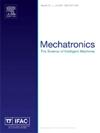Autonomous exploration of mobile robot equipped with LiDAR for high-quality reconstruction in large-scale indoor environments
IF 3.1
3区 计算机科学
Q2 AUTOMATION & CONTROL SYSTEMS
引用次数: 0
Abstract
High-quality 3D reconstruction is essential for applications such as autonomous driving, Augmented Reality (AR)/Virtual Reality (VR), and smart cities. Traditional methods using handheld sensors often result in incomplete and misaligned models. While autonomous exploration can improve these results, it often sacrifices quality for speed. This paper proposes a novel system for high-quality 3D reconstruction of large-scale indoor environments, leveraging a mobile robot equipped with a solid-state LiDAR mounted on a 2-degree-of-freedom (2-DOF) gimbal. The gimbal provides flexible scanning capabilities to overcome field-of-view (FoV) limitations of solid-state LiDARs. To address high-frequency, real-time quality evaluation during exploration, we introduce a new concept called guard-points, which guides the robot toward areas with insufficient point cloud density. These guard-points, alongside conventional frontier-based viewpoints, enable our planner to dynamically balance exploration and reconstruction quality. This system not only controls the mobile robot to visit unknown places and areas with insufficient reconstruction quality but also facilitates high-frequency, real-time exploration path planning. This paper concludes with various simulations and real-world experiments to validate the effectiveness of our system.
基于激光雷达的移动机器人自主探索,实现大尺度室内环境的高质量重建
高质量的3D重建对于自动驾驶、增强现实(AR)/虚拟现实(VR)和智慧城市等应用至关重要。使用手持传感器的传统方法往往导致模型不完整和不对齐。虽然自主探索可以改善这些结果,但它往往为了速度而牺牲质量。本文提出了一种新型的高质量室内环境三维重建系统,该系统利用了一个安装在2自由度(2-DOF)框架上的固体激光雷达移动机器人。该框架提供了灵活的扫描能力,以克服固态激光雷达的视场(FoV)限制。为了解决勘探过程中高频、实时的质量评估问题,我们引入了一个名为“守护点”的新概念,该概念可以引导机器人前往点云密度不足的区域。这些守护点与传统的边界视角一起,使我们的规划者能够动态平衡勘探和重建质量。该系统不仅可以控制移动机器人前往重建质量不足的未知地点和区域,还可以实现高频、实时的探索路径规划。最后通过各种仿真和实际实验验证了系统的有效性。
本文章由计算机程序翻译,如有差异,请以英文原文为准。
求助全文
约1分钟内获得全文
求助全文
来源期刊

Mechatronics
工程技术-工程:电子与电气
CiteScore
5.90
自引率
9.10%
发文量
0
审稿时长
109 days
期刊介绍:
Mechatronics is the synergistic combination of precision mechanical engineering, electronic control and systems thinking in the design of products and manufacturing processes. It relates to the design of systems, devices and products aimed at achieving an optimal balance between basic mechanical structure and its overall control. The purpose of this journal is to provide rapid publication of topical papers featuring practical developments in mechatronics. It will cover a wide range of application areas including consumer product design, instrumentation, manufacturing methods, computer integration and process and device control, and will attract a readership from across the industrial and academic research spectrum. Particular importance will be attached to aspects of innovation in mechatronics design philosophy which illustrate the benefits obtainable by an a priori integration of functionality with embedded microprocessor control. A major item will be the design of machines, devices and systems possessing a degree of computer based intelligence. The journal seeks to publish research progress in this field with an emphasis on the applied rather than the theoretical. It will also serve the dual role of bringing greater recognition to this important area of engineering.
 求助内容:
求助内容: 应助结果提醒方式:
应助结果提醒方式:


